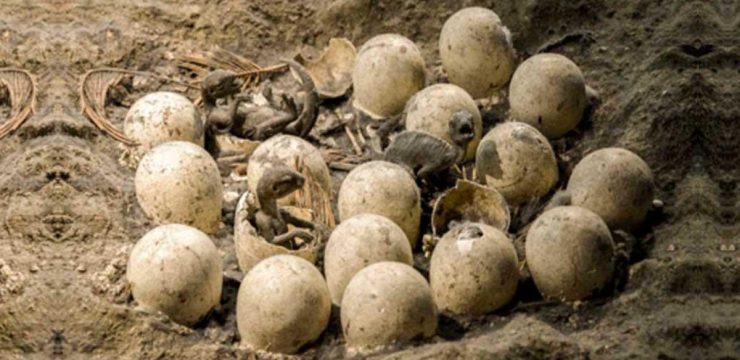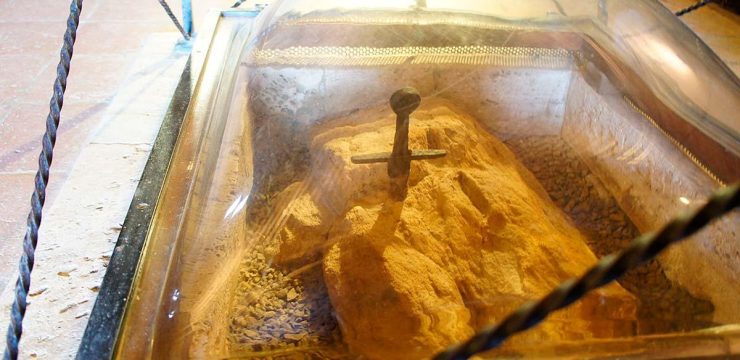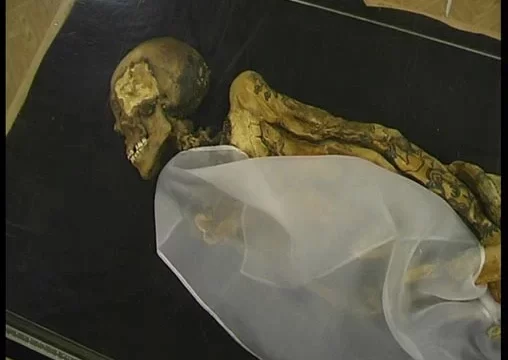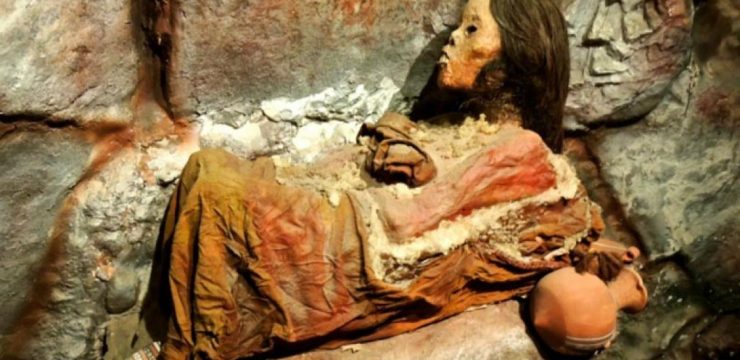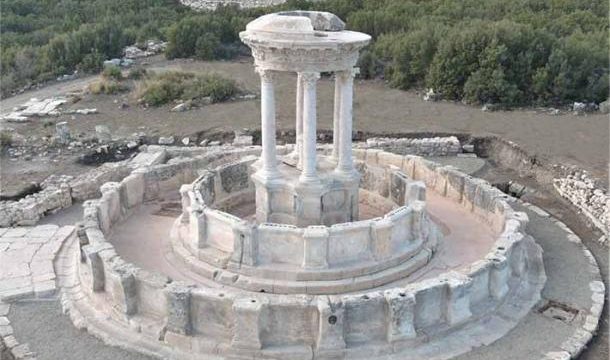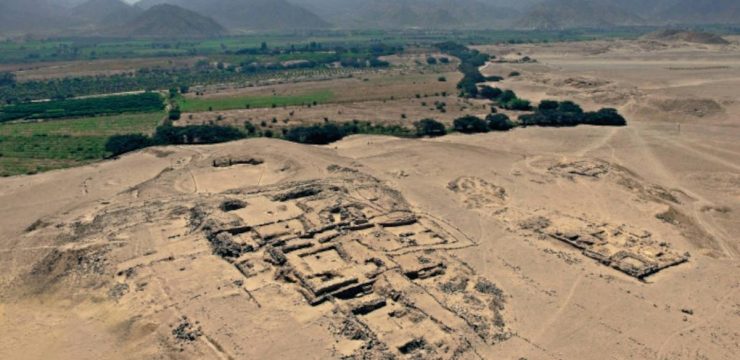In an extraordinary discovery that significantly enhances our knowledge of one of the oldest civilizations in the world, a team of archaeologists at the Era de Pando archaeological site in Peru’s Supe Valley has uncovered a 5,000-year-old “Fire Altar.” This find, officially announced by the Ministry of Culture of Peru, is believed to have been used for elite ceremonial purposes by the Caral civilization. Known as the oldest civilization in the Americas, the Caral culture has long fascinated historians and archaeologists alike, and this latest revelation provides new insight into their spiritual, social, and political practices.
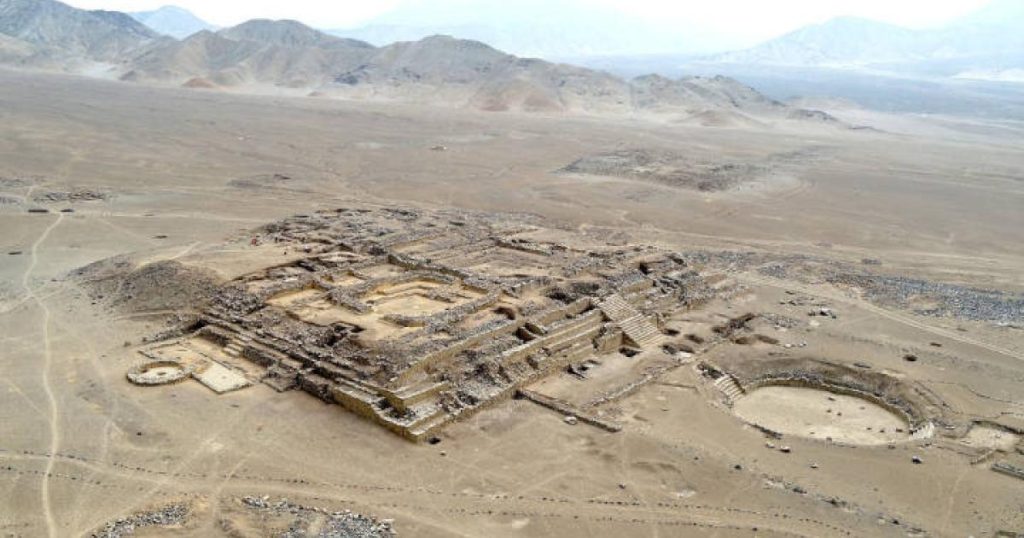
The excavation was led by Dr. Ruth Shady, the prominent director of the Caral Archaeological Zone (ZAC). Her team located the altar adjacent to a key structure known as the Major Pyramidal Public Building “C1,” positioned on the western side of the ancient complex. The altar itself is a circular structure, approximately seven meters in diameter, and can be accessed via a ceremonial staircase that leads down from a ritual hall. This altar opens onto a rectangular courtyard measuring 16 by 8 meters (approximately 52.5 feet by 26.25 feet), suggesting that it was part of a major ceremonial center designed for sacred practices of great importance to the Caral elite.
The site where the altar was uncovered is one of the most significant associated with the Norte Chico Civilization, also known as the Caral or Caral-Supe Civilization. This ancient society thrived in the Pre-Columbian era, dating back approximately 5,000 years. Its settlements are situated roughly 200 kilometers (about 124 miles) north of present-day Lima in the Supe Valley and nearby coastal regions of north-central Peru. The Caral people are best known for their large-scale architectural projects, including imposing pyramidal structures, carefully planned urban spaces, and sophisticated irrigation systems. Despite their impressive achievements, the civilization mysteriously declined around 1800 BC, leaving behind well-preserved remnants that continue to reveal their way of life.
What sets the Caral civilization apart from many others of the ancient world is their apparent lack of warfare. Unlike later Andean societies that often relied on military dominance, Caral’s success was grounded in ideological authority, religious ritual, and scientific understanding. The newly discovered Fire Altar further affirms this peaceful yet highly organized society. According to the Ministry of Culture, this specific altar was not accessible to the general population. Instead, it was reserved for a small group of influential religious, political, and social elites who performed highly symbolic ceremonies in its sacred space.
These rituals typically involved the incineration of offerings, which could include quartz crystals, fish remains, mollusks, handmade beads, and agricultural produce. Each item held profound symbolic meaning, representing the community’s spiritual beliefs and natural environment. The process of burning these items was not merely an act of devotion, but a way of shaping the sacred narrative of Caral society. Dr. Shady explained in the ministry’s statement that these elite rituals were integral to the construction of social cohesion, political authority, and cultural identity in Caral’s early state.
She emphasized that the existence and use of such altars reflect a deep knowledge of scientific and technological practices. “These altars bear witness to the production of knowledge in science and technology,” she noted. The materials used, the structure’s geometry, and its relationship to other buildings all suggest a high degree of planning and understanding of natural forces and cosmology. The Caral leaders’ approach to governing—centered on symbolic power and public ceremony—allowed them to maintain a peaceful and orderly society for centuries.
The Era de Pando site itself spans more than 57 hectares and contains at least 48 major architectural structures. These include pyramidal temples, administrative buildings, and elite residences. While it began as a smaller settlement, Era de Pando’s significance grew during later stages of the Caral-Supe civilization. Its location was key: it sat at the meeting point of trade routes and ecological zones, approximately 12.5 kilometers (or about 8 miles) from the Pacific coast. This gave it access to both marine and agricultural resources, making it an important hub in Caral’s expansive interregional network.
The layout of the site, including monumental buildings and well-planned public spaces, suggests a society that placed high value on order, ritual, and shared purpose. Archaeologists working at Era de Pando have also unearthed numerous figurines, tools, and ceremonial artifacts that paint a fuller picture of Caral’s daily and spiritual life. These findings reinforce the idea that Caral had a sophisticated socio-political structure that did not rely on violence or coercion. Instead, their leaders cultivated unity through belief systems, public ceremonies, and shared cultural practices.
The discovery of the Fire Altar adds a critical piece to the puzzle of how this ancient society functioned. It underscores the importance of elite-led ritual practices and the central role of ceremonial spaces in Caral’s urban planning. The altar’s size, construction, and restricted access reflect its exclusivity and significance. It was not merely a place for spiritual expression but also a powerful symbol of leadership and social order.
What’s more, the location of this altar near one of the site’s largest pyramidal structures shows the careful integration of religious and political functions in Caral’s architectural design. The proximity to a major public building implies that these ceremonies were designed to influence not just the spiritual realm but the political one as well. Leaders who controlled such sacred spaces likely wielded considerable influence, shaping public opinion and guiding communal decisions.
Today, Era de Pando and other Caral-associated sites continue to be a source of fascination and scholarly research. The preservation of these sites, along with ongoing excavations, allows modern historians to better understand the roots of civilization in the Americas. The Caral people were visionaries in their time—architects, engineers, spiritual leaders, and administrators. Their legacy provides a compelling model of how ancient societies could achieve complex social organization and prosperity without war.
This latest find—the 5,000-year-old Fire Altar—only deepens that legacy. It offers a glimpse into a world where ritual and reason worked hand in hand to build one of humanity’s earliest and most remarkable civilizations. As researchers continue to explore the site, there is little doubt that more secrets of the Caral civilization will come to light, further enriching our understanding of human history and cultural evolution in the ancient Andes.
